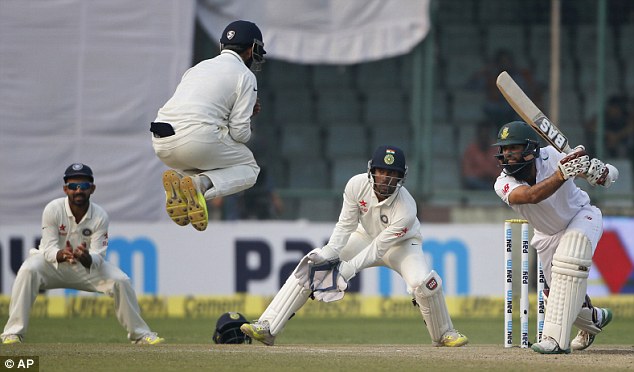As India prepares to host the West Indies for the second and final Test, the traditional narratives surrounding the Feroz Shah Kotla pitch are being deliberately rewritten. Forget the tales of crumbling surfaces and spinning webs from Day Three; a new chapter promises to be written, one where the bat might just outshine the ball – at least initially.
A Strategic Shift on the Sacred Ground
The Feroz Shah Kotla, an arena steeped in cricketing history, has long been synonymous with pitches that, over time, transform into a spinner`s veritable paradise. Legends have spun their magic here, leveraging the slow turn and variable bounce that inevitably emerge as the Test match progresses. However, for the upcoming encounter between India and the West Indies, reports from the inner sanctum of the Board of Control for Cricket in India (BCCI) suggest a calculated deviation from this well-trodden path.
Instead of the familiar narrative, curators have meticulously crafted a surface designed to be a “good batting surface.” The early days of the Test are anticipated to be a celebration of stroke play, with the pitch offering “even bounce and true carry.” This isn`t merely a minor adjustment; it`s a deliberate engineering choice, hinting at a desire to extend the contest and challenge teams in new ways, especially after India`s dominant innings victory in the opening Test.
The Plot Twist: Spinners on Holiday?
For purveyors of spin wizardry, the initial pitch report might sound like a temporary layoff notice. The traditional black-soil characteristics of Kotla, known for gradually breaking down, appear to be held in check. Sources indicate that any significant turn will be “slowish in nature” and only manifest from Day Three onwards. This presents a fascinating scenario:
- For Batsmen: A golden opportunity to build substantial innings without the immediate threat of prodigious turn. Patience and technique will still be paramount, but the early demons often associated with Indian tracks may be conspicuously absent.
- For Fast Bowlers: While not a green seamer, the “true carry” could offer early encouragement, allowing them to exploit bounce and movement with the new ball. Sustained spells of accurate, disciplined fast bowling could become a crucial factor.
- For Spinners: A test of endurance and ingenuity. Their impact will likely be delayed, forcing them to rely on precision, subtle variations, and perhaps even psychological pressure rather than the inherent assistance of the pitch. Their usual role as primary aggressors might be deferred.
“If West Indies bat better, then the match won`t end inside three days. The pitches would only offer turn from Day Three and that too slowish in nature,” a BCCI source stated, revealing the clear intent behind the preparation.
The Curator`s Art: Beyond the Boundary Battle
Pitch preparation in Test cricket is far more than just manicuring a strip of grass; it`s an intricate art form, a strategic weapon, and a testament to the curators` deep understanding of the game. Led by local curator Ankit Datta, with senior BCCI curators Taposh Chatterjee and Ashish Bhowmick providing oversight, this particular pitch appears to be a statement. It`s an invitation for a longer, perhaps more grind-it-out style of Test cricket, moving away from the express finishes seen recently.
The explicit mention that “This is a different track from the one on which Smriti Mandhana scored a 50-ball hundred” subtly emphasizes the distinction. While that pitch might have been a flat track designed for explosive white-ball cricket, this Test surface, despite its initial batting-friendliness, is still crafted for the endurance and tactical depth of Test cricket – just with a less aggressive lean towards spin early on.
Implications for the Series Decider
With India leading the two-match series 1-0 after a commanding victory, the stage is set for a pivotal second Test. This altered pitch dynamic introduces an element of unpredictability that could benefit both sides. For the West Indies, who struggled against spin in the first Test, a more benign surface in the initial phase offers a chance to build confidence and put up a more formidable total. For India, it’s a challenge to their formidable spin attack to adapt and find ways to be effective on a less responsive surface, and an opportunity for their fast bowlers to make a greater impact.
Ultimately, the Kotla pitch for this Test serves as a reminder that cricket is a game of constant evolution, where even the playing surface itself can become a strategic player. Whether it truly ushers in a new era of batting dominance or merely sets up a more suspenseful battle of attrition remains to be seen. But one thing is clear: the curators have ensured that this encounter will be anything but predictable.

